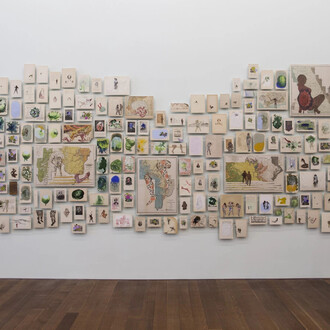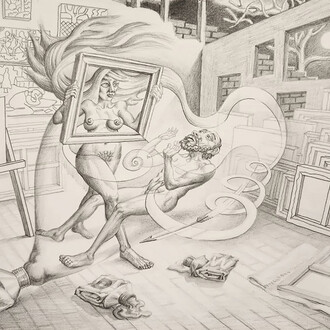“My work is my body; my body is my work,” Helena Almeida declared in 1969. Around this time the artist took a photograph of herself wearing a blank pink-toned canvas across her torso—at once a comical and a radical gesture, and one that marked a crucial turn in her practice. Almeida (Portuguese, born 1934) had studied painting in Lisbon in the mid-1950s but since 1969 has produced mainly black-and-white photographs of herself, sometimes painting or tinting them.
These are never self-portraits, but the compositions always center on the artist’s body, always differently posed or contorted and almost always captured in the same corner of her studio. She tends to work in long, sometimes open-ended series, and in recent decades she has printed her photographs at full-body scale or larger. While Almeida still calls herself a painter rather than a photographer, she is at the same time also a kind of dancer, engaged in an ongoing, experimental choreography of everyday gestures and physical limits, exploring the seemingly endless malleability of the body.
Almeida emerged in the context of the late 1960s and 1970s—at the advent of feminist and performance-oriented art, when many young, avant-garde practitioners explored the physicality of the artist’s body and art making as a literal record of actions taken in the studio. Indeed, since then she has figured as one of the most significant artists working in Portugal. The Art Institute’s exhibition is Almeida’s first solo show in the United States in more than a decade, and, rather than historicizing the artist’s practice, it emphasizes her work of the last two decades, including examples from several major photographic sequences since 2000.
These are masterful series—the lyrical, humorous, poignant, and profound work of an artist who has by now used and reproduced her body for decades. Almeida’s recent photographs not only demonstrate the intimate knowledge the artist has gained by tracking her physical form over time but also remind us that we are all shape shifters—and that our bodies can be revealed to us anew with every considered action. As the exhibition’s title indicates, such work is never finished.
















